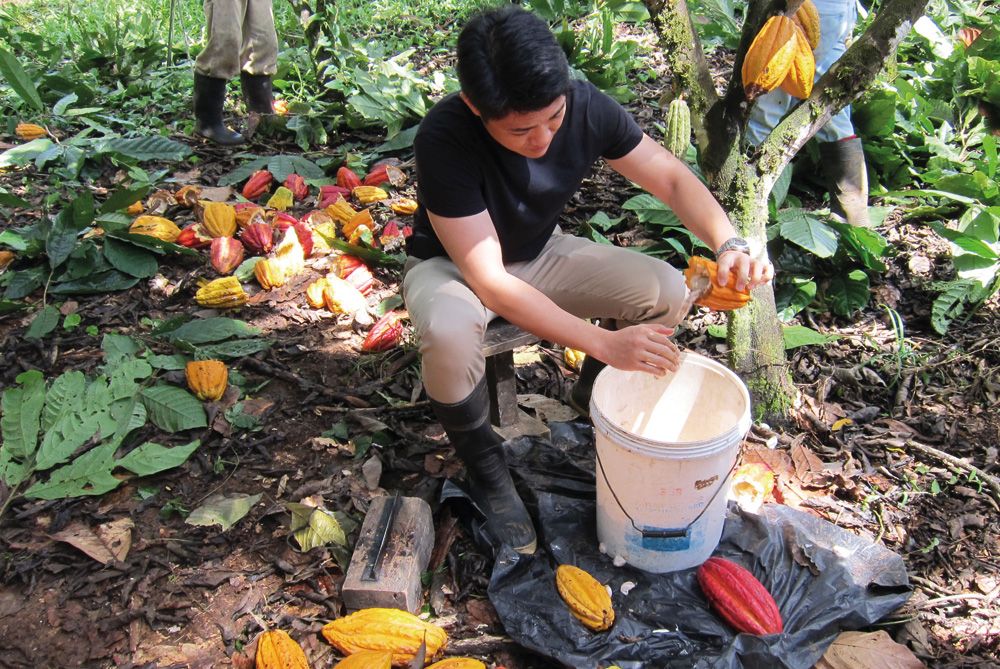Delve deeper into everyone’s favourite indulgence and how Southeast Asia is growing as a world class producer of chocolate.
It’s often our first luxury—comfort in a melting mouthful. Love, solace and joy cloaked in a luscious confection. And make no mistake, chocolate is indeed a luxury. The journey it takes from cacao bean to chocolate bar is a long and arduous one that today is even more preciously valued, as fresh warnings of an impending global cacao shortage resonate around the world.
To make chocolate, cacao pods are first plucked from their trees and broken open. Their beans are cleaned, fermented and dried in the sun before being packed and shipped to chocolate makers. What follows is low-temperature roasting to develop the beans’ flavour, winnowing (separating the nibs or “flesh” from the bean), grinding into cocoa mass, and high-pressure processing to yield either cocoa powder or cacao butter.
The latter is ground, mixed and kneaded with ingredients like sugar and milk to form chocolate, which is then conched (a process of rolling, kneading, heating and aeration) to define its final flavour and aroma, and refined for smoothness. Only then can it be shaped into blocks or drops, and tempered so the chocolate reaches its most stable form.
(Related: Chocoholics, This Is The Vacation You Need)


Although French, Belgian and Swiss chocolate are often cited by aficionados as their chocolate of choice, none of these countries actually produces cacao beans. It is the Ivory Coast, Ghana and Indonesia that are among the largest cacao producers, and as consumers become increasingly conscious about where their food comes from, chocolate makers from Southeast Asia are looking to their backyards for beans to transform into chocolate bars.
Indonesia, the world’s third-largest exporter of cacao, boasts a clutch of fledgling bean-to-bar players such as Pipiltin Cocoa and Pod Chocolate. In Malaysia, Ong Ning Geng, the founder of Chocolate Concierge, not only purveys chocolates made from local cacao beans, he’s also gone ahead and bought his own cacao trees. Vietnamese chocolatier Marou Faiseurs de Chocolat is already a well-loved brand around the Asian region, while in the Philippines, Hiraya Chocolates sources its beans from Davao, as does other homegrown brands such as Malagos, Theo & Philo and Manila Chocolatier. Having their bases located close to the cacao farms they buy from means these chocolate makers have an active hand in their raw materials—so the flavour and quality of their chocolate is generally world-class.


